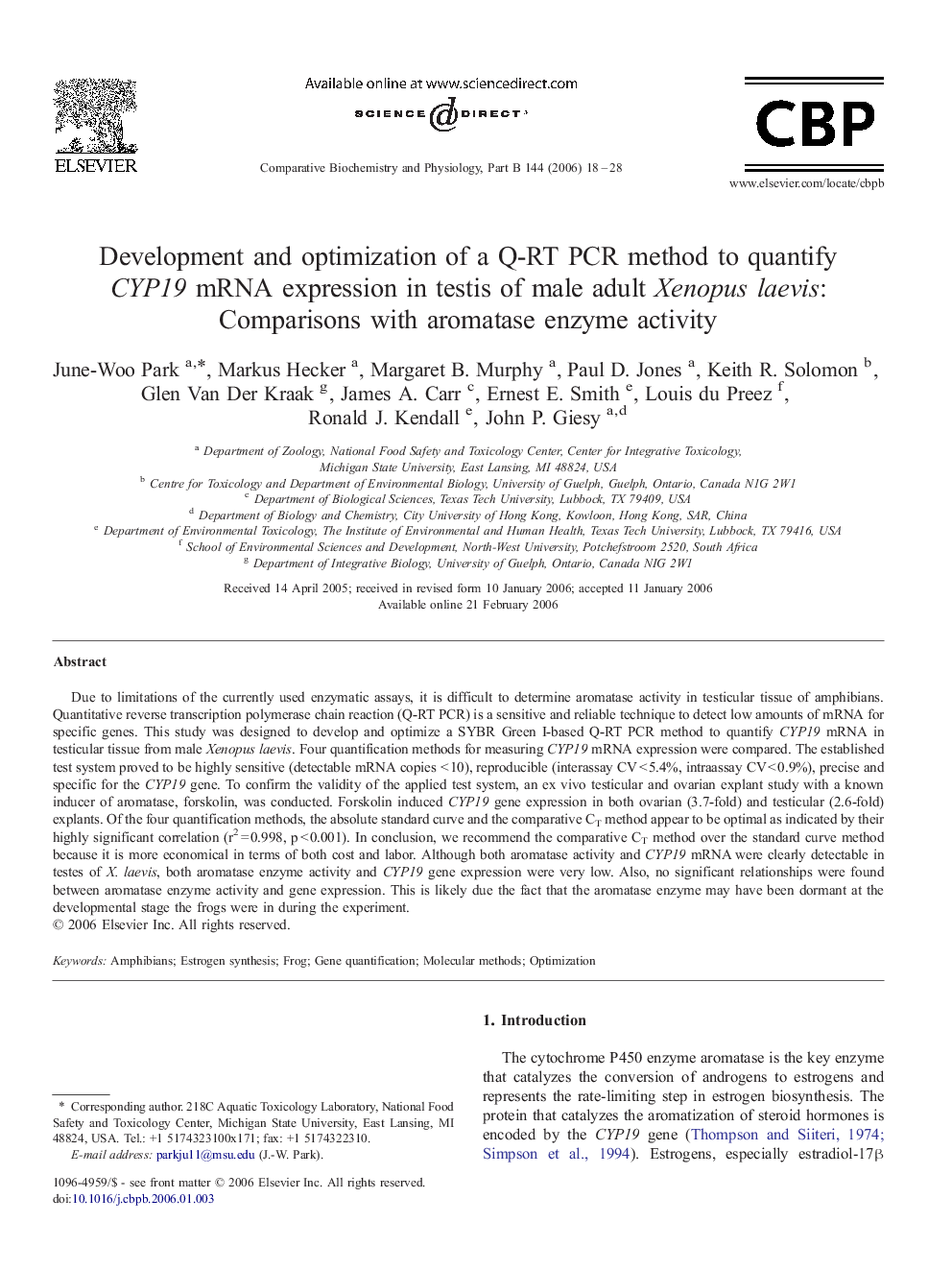| کد مقاله | کد نشریه | سال انتشار | مقاله انگلیسی | نسخه تمام متن |
|---|---|---|---|---|
| 1977019 | 1060720 | 2006 | 11 صفحه PDF | دانلود رایگان |

Due to limitations of the currently used enzymatic assays, it is difficult to determine aromatase activity in testicular tissue of amphibians. Quantitative reverse transcription polymerase chain reaction (Q-RT PCR) is a sensitive and reliable technique to detect low amounts of mRNA for specific genes. This study was designed to develop and optimize a SYBR Green I-based Q-RT PCR method to quantify CYP19 mRNA in testicular tissue from male Xenopus laevis. Four quantification methods for measuring CYP19 mRNA expression were compared. The established test system proved to be highly sensitive (detectable mRNA copies < 10), reproducible (interassay CV < 5.4%, intraassay CV < 0.9%), precise and specific for the CYP19 gene. To confirm the validity of the applied test system, an ex vivo testicular and ovarian explant study with a known inducer of aromatase, forskolin, was conducted. Forskolin induced CYP19 gene expression in both ovarian (3.7-fold) and testicular (2.6-fold) explants. Of the four quantification methods, the absolute standard curve and the comparative CT method appear to be optimal as indicated by their highly significant correlation (r2 = 0.998, p < 0.001). In conclusion, we recommend the comparative CT method over the standard curve method because it is more economical in terms of both cost and labor. Although both aromatase activity and CYP19 mRNA were clearly detectable in testes of X. laevis, both aromatase enzyme activity and CYP19 gene expression were very low. Also, no significant relationships were found between aromatase enzyme activity and gene expression. This is likely due the fact that the aromatase enzyme may have been dormant at the developmental stage the frogs were in during the experiment.
Journal: Comparative Biochemistry and Physiology Part B: Biochemistry and Molecular Biology - Volume 144, Issue 1, May 2006, Pages 18–28